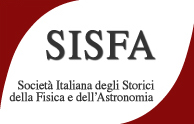Speaker
Description
Models are of central importance in many scientific contexts and scientists spend significant amounts of time in building, testing, comparing, and revising models. The study of models and how they are used in scientific practice is a widely debated topic in the actual philosophy and history of science. A physical model is an abstract non-linguistic structure created from general principles – such as the principles of physics - and whose elements can be identified with properties of the real world; in this way a model represents some aspects of reality.
An example of a model that we will consider is that of thin shell that is now widely used both in General Relativity and in Astrophysics.
The first who analyzed this problem was Lanczos who emphasized how some discontinuities of the metric were spurious and not effective. Darmois and Lichnerowicz later clarified - from a more general and geometric point of view - how the choice of suitable coordinates facilitated the solution of the problem. Then Synge showed how the use of such coordinates was not the best choice and proposed a scalar invariant to determine the metric junction conditions. Finally Israel gave an elegant formulation of all these problems for a non-zero hypersurface and apply this model to shock waves and thin shell of dust in General Relativity.

